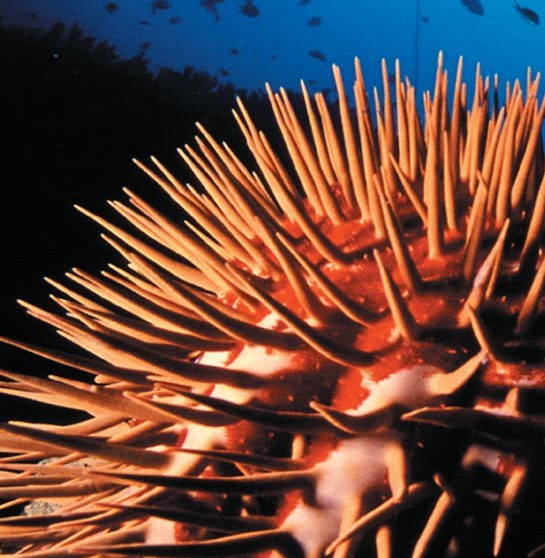Acidification feeds starfish
 Crown-of-thorns starfish could grow faster as ocean acidification levels increase, a new study shows.
Crown-of-thorns starfish could grow faster as ocean acidification levels increase, a new study shows.
Marine researchers Pamela Kamya and Associate Professor Symon Dworjanyn have found that ocean acidification causes the algae that the starfish feeds on to become easier to eat and more nutritious.
“Crown-of-thorns Starfish populations boom periodically and can cause great damage to coral reefs. By some assessments, on the Great Barrier Reef they cause more damage than ocean warming or cyclones,” Professor Dworjanyn said.
“This species is causing destruction to coral reefs right through the Indo-Pacific, from Japan to Indonesia, so we were interested in how these starfish would fare in future ocean conditions.
“This study shows that this starfish may become even more of a threat as a result of climate change.”
Oceans are becoming more acidic as they absorb increasing concentrations of atmospheric carbon dioxide (CO2).
“Surprisingly, the indirect effects of ocean acidification cause the starfish to grow faster as their algae food becomes more palatable and easier to eat,” Professor Dworjanyn said.
“This happens because the seaweed usually defends itself with hard calcium carbonate in its tissue, but higher acidity inhibits this, making the algae less defended against herbivores and more edible and nutritious for baby starfish.
“We were studying the crown-of-thorns starfish at a size just before they start munching on coral, which is important because we are still unsure what triggers outbreaks of adults.”
Professor Dworjanyn said this was another reason humans need to reduce the amount of CO2 in the atmosphere.
“Coral reefs are already affected directly by climate change, indirect effects such as this may speed their decline and we need to take action,” he said.








 Print
Print